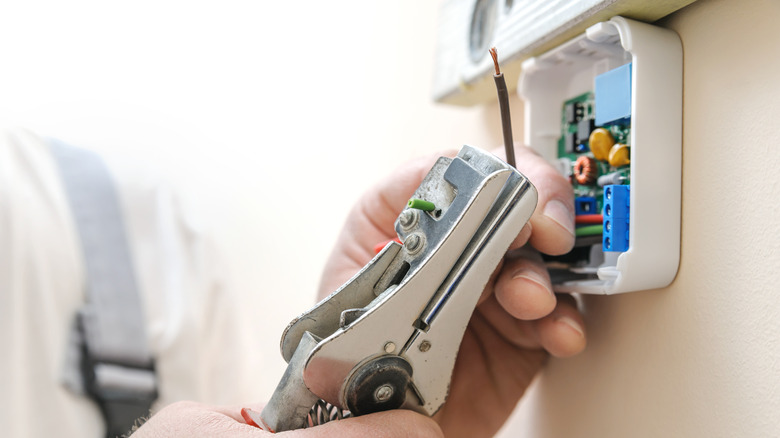How To Choose The Right Programmable Thermostat To Help Save On Heating Costs
We may receive a commission on purchases made from links.
If opening your energy bill makes you cringe, it's time to think about installing a programmable thermostat. Beyond being one of the easiest ways to lower your utility costs, these tiny devices can significantly cut your energy use by automatically adjusting your home's temperature when you're asleep or out and about. Beyond saving you money each month, programmable thermostats help regulate indoor temperatures more consistently to keep you and your family comfortable while also helping your HVAC system last longer. When you're tired of constantly worrying about how you're going to afford your heating bill, a programmable thermostat is a practical upgrade that quickly pays for itself. To choose the right one, you should focus on compatibility with your existing HVAC system, ease of use, smart connectivity options, and, of course, your available budget.
Programmable thermostats range from basic models under $50 to smart devices that can cost hundreds. The most popular smart thermostats are packed with features, some of which you may or may not need. Simple versions offer pre-set schedules or customizable daily programs, while more advanced models can integrate with Alexa or Google Home, monitor indoor air quality, and even track your daily usage in real time in order to adjust energy use based on your specific habits. Even better, the installation process can be DIY-friendly — although if you have an older HVAC system it may be wise to call in a professional for help depending on the complexity of the programmable thermostat you choose.
Pick the best programmable thermostat for your budget and lifestyle
After deciding to upgrade to a programmable thermostat, it's easy to feel overwhelmed by the various options available. If your daily routines are predictable, a 7-day or 5-2 day programmable thermostat is a reliable and affordable choice. Although they don't have as many bells and whistles, basic models let you create customized heating and cooling schedules by either selecting a different mode for each day of the week, or one for weekdays and another for weekends. Your HVAC system then automatically adjusts while you're away and warms or cools your home before you get back, saving energy without requiring constant manual changes.
If you travel frequently or your family's routine is hectic, a smart thermostat may be a better investment, despite the higher upfront cost and installation hassle. These connect to your home's WiFi and adjust in real time using sensors or mobile app controls. Some smart thermostats even learn your habits over time before building a schedule that maximizes your personal comfort and overall energy efficiency without requiring any detailed programming input.
As you shop around, be realistic about how much you want to think about (or ignore) your device. Some will prefer to set their programmable thermostat once and never worry about it again, while others may want to frequently check energy reports to maximize savings. Compatibility also matters. Many modern thermostats require a C-wire (common wire) for power. Although there are some adapter kits and battery-powered models out there, if you have a heat pump, multi-stage furnace, or radiant heating, look for models that are explicitly compatible to avoid headaches later.

